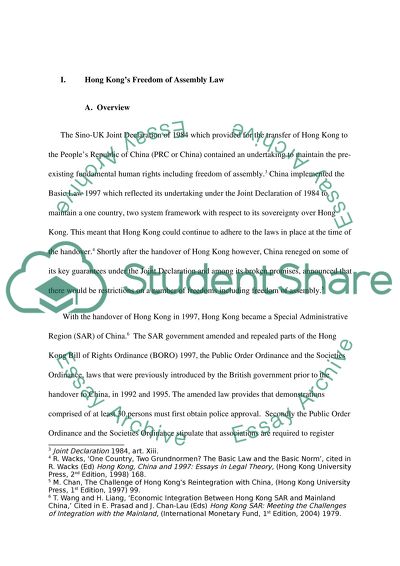Cite this document
(“Freedom of Assembly in Hong Kong Essay Example | Topics and Well Written Essays - 4000 words”, n.d.)
Retrieved from https://studentshare.org/politics/1407773-freedom-of-assembly-in-hong-kong
Retrieved from https://studentshare.org/politics/1407773-freedom-of-assembly-in-hong-kong
(Freedom of Assembly in Hong Kong Essay Example | Topics and Well Written Essays - 4000 Words)
https://studentshare.org/politics/1407773-freedom-of-assembly-in-hong-kong.
https://studentshare.org/politics/1407773-freedom-of-assembly-in-hong-kong.
“Freedom of Assembly in Hong Kong Essay Example | Topics and Well Written Essays - 4000 Words”, n.d. https://studentshare.org/politics/1407773-freedom-of-assembly-in-hong-kong.


